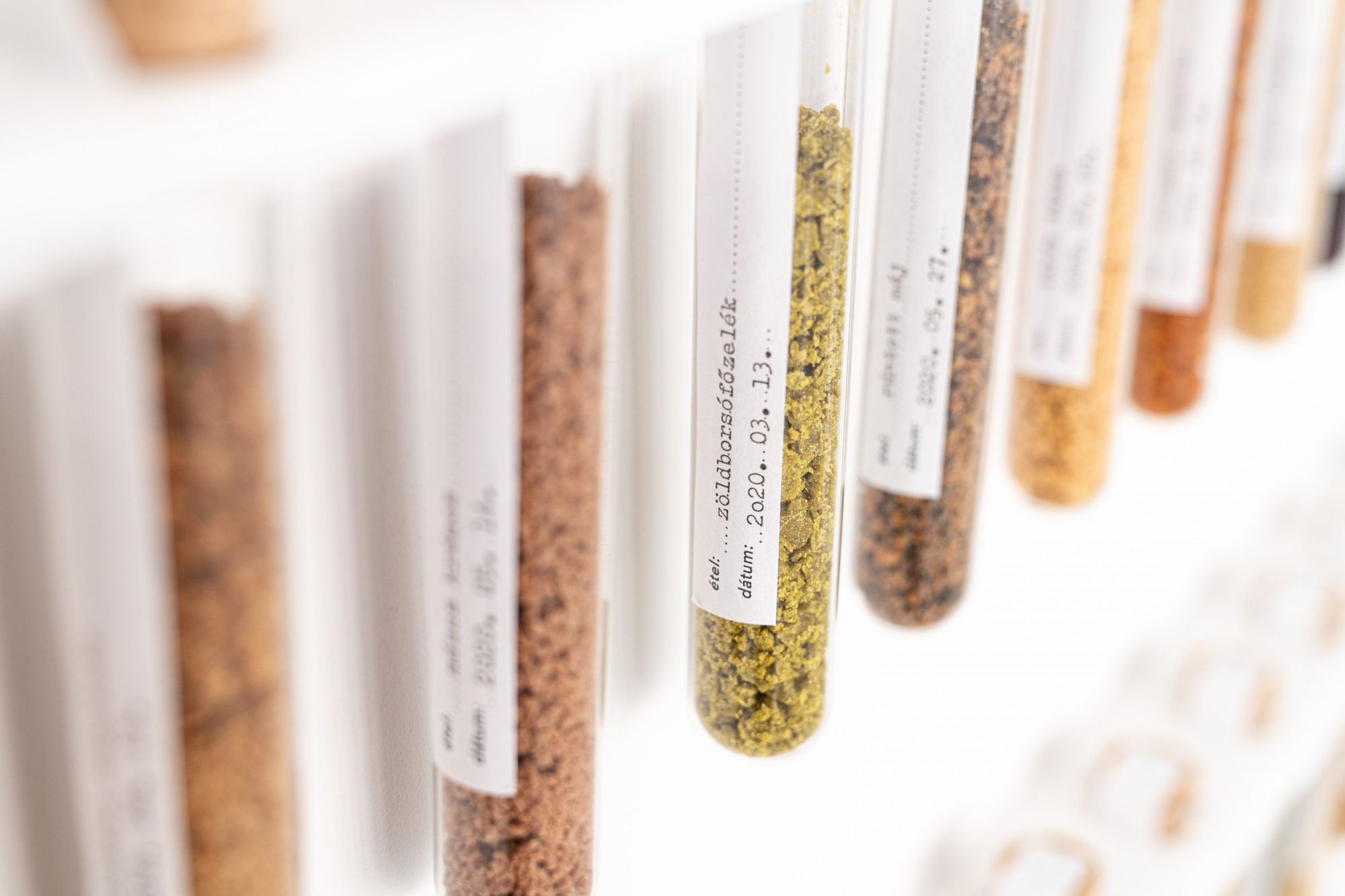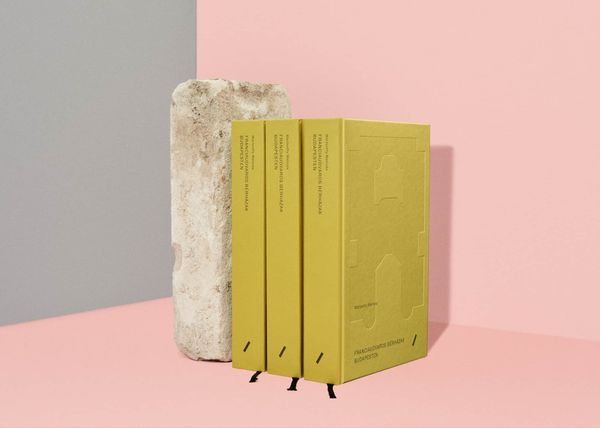In her doctoral dissertation, food designer Angéla Góg continued her previous research—after collecting and systemizing our taste memories and defining the taste of happiness, she was looking to find a way to preserve all this for posterity. She designed a food form that, in addition to being sustainable, environmentally friendly and local, also offers an experience by conserving the dishes of our past. The meals created this way to be used as condiments form a complete, nourishing dish together with the basic porridge, which earned Angéla her DLA degree at MOME deservedly.
Written by Bianka Geiger
When we reminisce about our past, the basis of our memories is often not only a given sight or a tone: it’s not a single-sided experience, but something much more complex that affects all our senses. We can almost feel the warmth of the sun or the strokes of the wind on our skin, we can hear the noises of the environment and flavors and scents might also come to our mind. Perhaps we can even remember the person with whom we were in the moment.
What’s even more exciting is that it works both ways—we all know the feeling of taking a bite of a piece of pastry or corn on the cob, and finding ourselves standing next to grandma or on a hot summer day at Lake Balaton all over again in an instant. Coined by Roger Brown and James Kulik in the seventies, the flashbulb memory works like an inner camera: it captures a moment in a highly detailed, exceptionally vivid snapshot-like manner, which only needs a key memory to be recalled—a mouthful of food, for example.

Food designer Angéla Góg has been intrigued by this topic for a long time. Her work became widely known in 2015 with her master’s thesis titled Emlékek cukrászdája (Confectionary of Memories), in the course of which she collected hundreds of memories, which she then synthetized and systematized. She defined general memory types known by all of us, and thus invite us for an external and internal dialogue. The five pastries symbolizing these (grandma, desire, Sunday, vacation and if only) mean the start of a liberating journey back in time, where flavors, colors and shapes all present a section of the past.
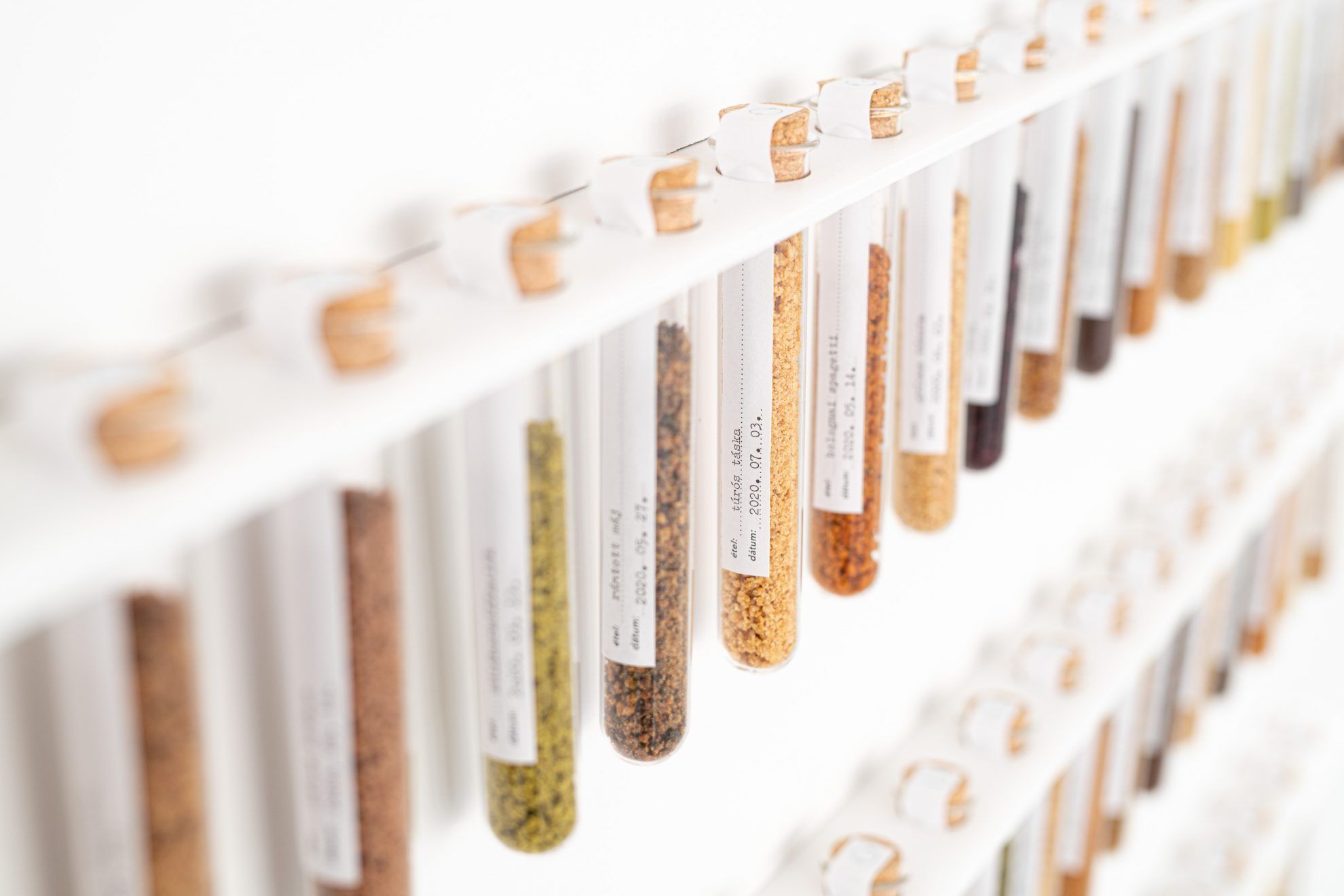
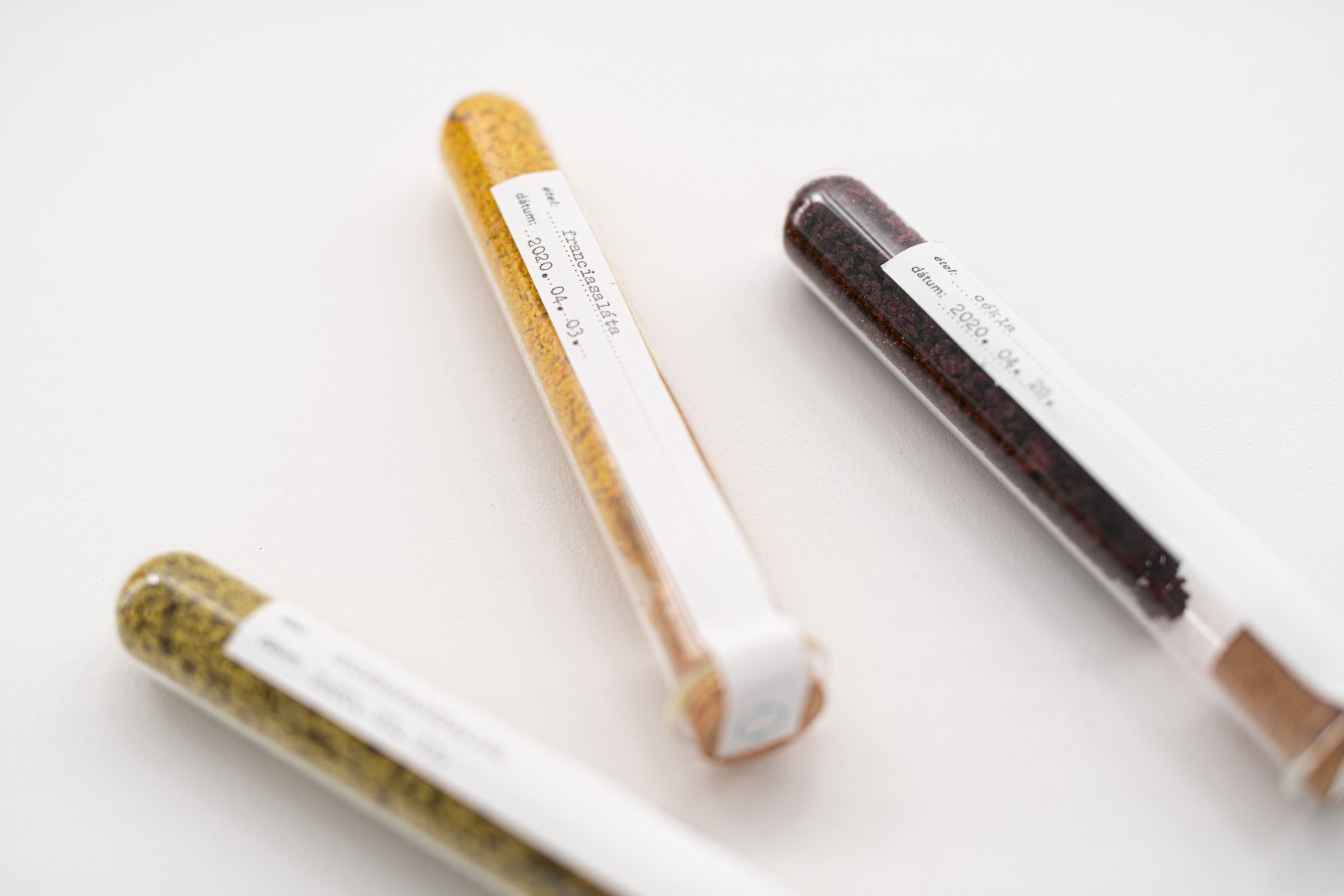
Angéla didn’t stop after the success of the project: after exploring the past, now she is looking at the questions of the present and the future, thus making her work a trilogy of some sort. In the case of the Sunday Lunch or the Memories of the Future, she once again attempted to preserve personal stories and make them available for others to experience: strangers became acquaintances while sitting at the table together, sharing memories and experiences. She more and more felt the importance of the fact that the flavors of the childhood often also mean the flavors of happiness at the same time, and thus are worthy of preservation. These experiences urged her to start looking for a method that could truly make this happen.

Now she was not only looking for specific dishes, but she also wanted to find the textures, flavors and scents that were the most important to the individuals. This is how she explored the concept of comfort food, meaning dishes providing a feeling of safety and calmness to the consumer. Comfort food could be a big bowl of hot soup or a cup of frothy hot cocoa. The results of her research showed that the person making the dishes is inseparable from the dishes themselves, for example in the case of green pea soup, it is not only the taste of pea or the medium thick texture of the soup that are important, but also how it carries the touch of the person who made it—ultimately meaning that grandma’s soup is grandma’s soup, and it cannot be replaced by aromas or condiments.
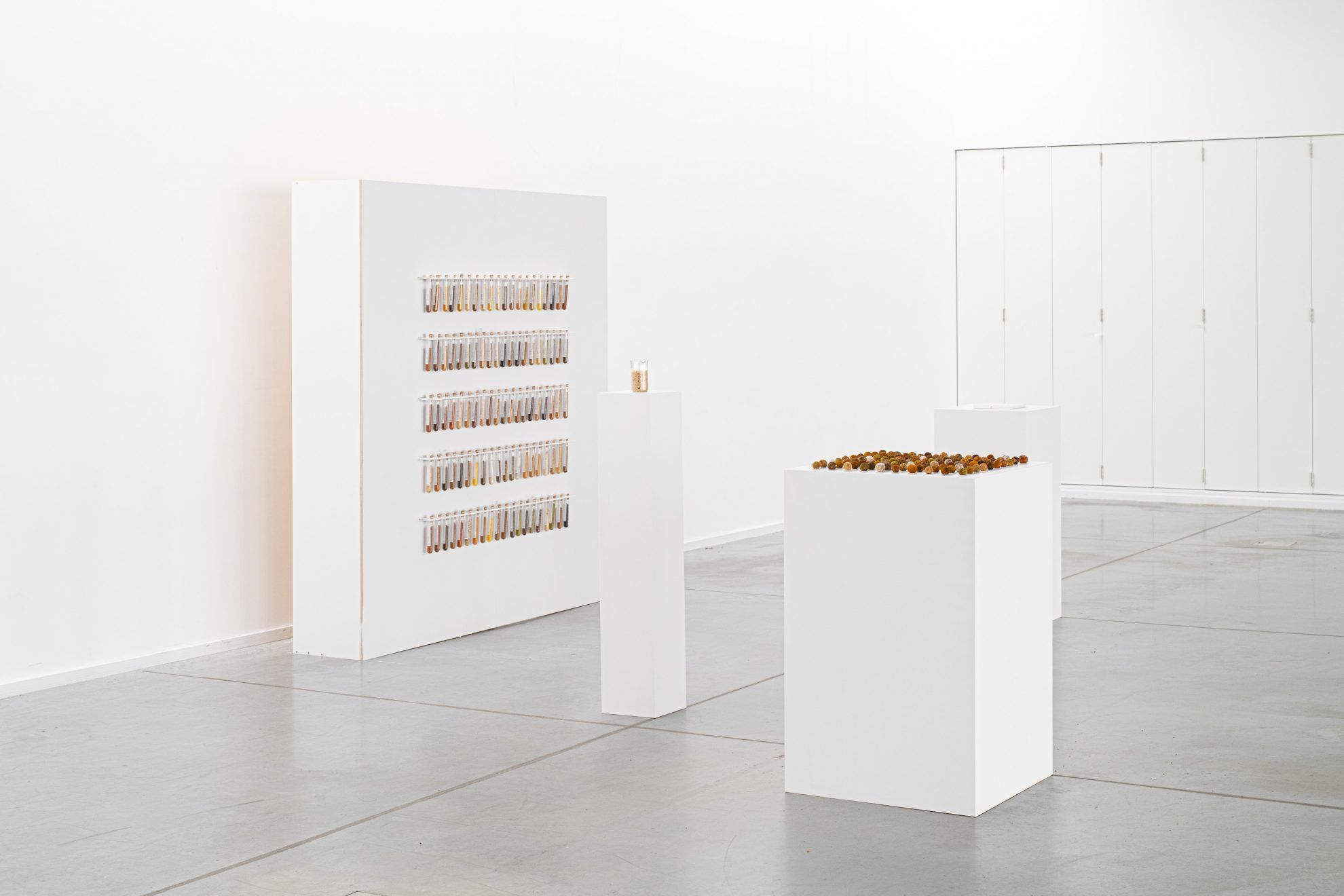
To that end, in her doctoral thesis she needed a method in which she could preserve the soul of these dishes. This is how she found the method of drying, with the help of which both the color and taste of a dish can be kept while also making it fit for conservation by reducing water content and by sealing hermetically. Ultimately a hundred dishes were drying the machine in her workshop from cottage cheese dumplings through bean pottage to gyros, which then she powdered and put into test tubes, thus creating a taste bank for posterity.
As these “food powders” mainly serve as spices, they also needed a carrier. Angéla developed a perfect oat-based instant porridge with the help of food researcher dr. Ernő Gyimes, three portions of which covers the daily nutritional needs of an adult. It’s production is cheap and sustainable and can be made practically anywhere—it only requires hot water, a plate and a spoon. Thus the “one plate of hot food” evokes the lovely feeling in two ways, and urges us towards countless new associations.
She tested the dish she received this way first with a close group of friends in the summer: they even recorded this event on video, which you can see below. The results were quite educative—the participants could recognize the majority of the flavors even though the change of texture confused many. All in all, her project received a positive response, and thus she was preparing for her doctoral thesis defense in December with great enthusiasm—in line with her previous works, she would have presented the dishes in a bonbon format. Unfortunately, her event was cancelled due to the epidemic, but Angéla plans to organize an exhibition in spring 2021.
Preserving taste memories like this does not only answer urging gastronomical and dietetic questions, but also highlights the importance of our loved ones, family and childhood as a kind gesture, which has become a more important need of ours this year than ever before.
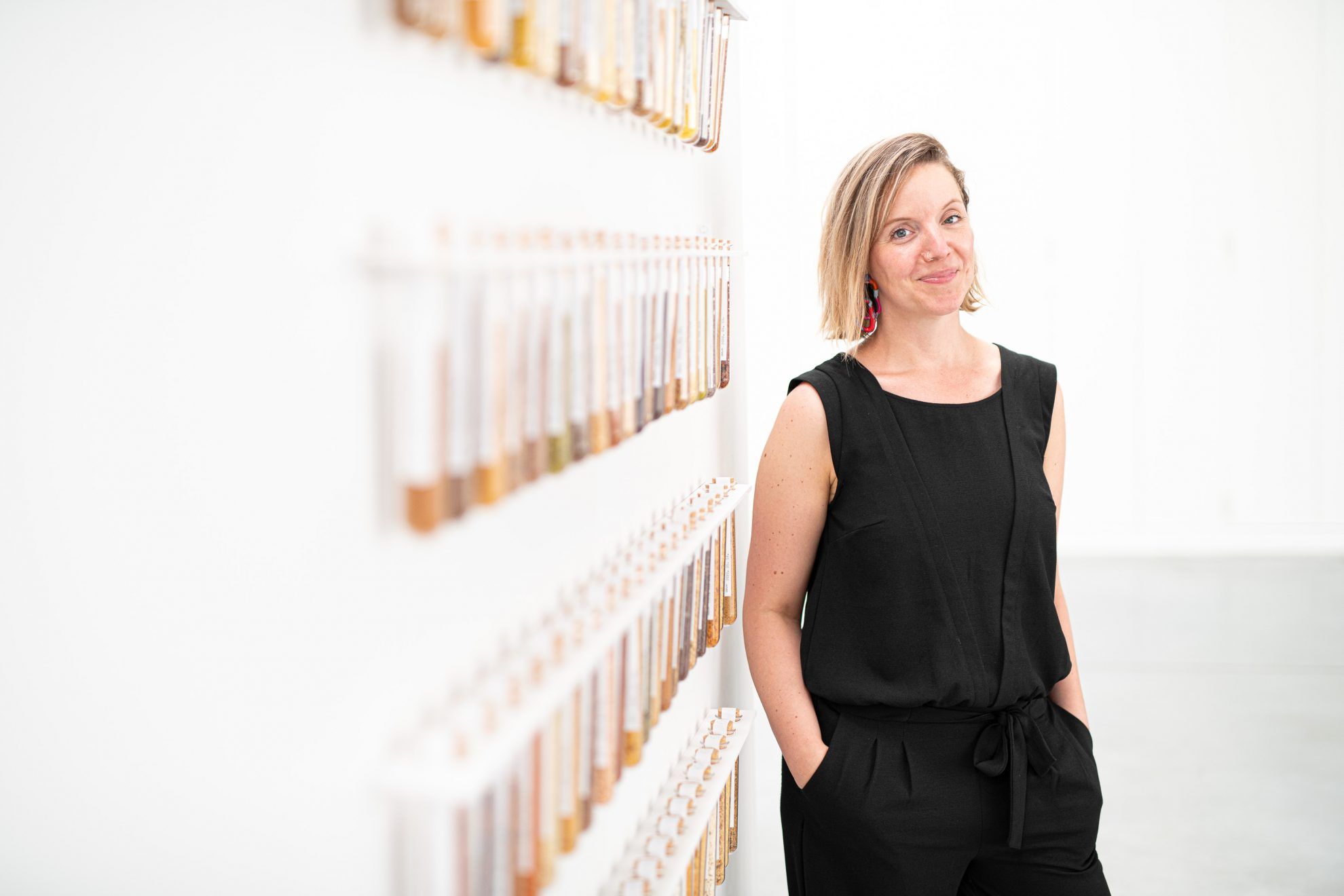
Goga Food Design | Web | Facebook | Instagram

The Urban Metabolism | URBANUM










